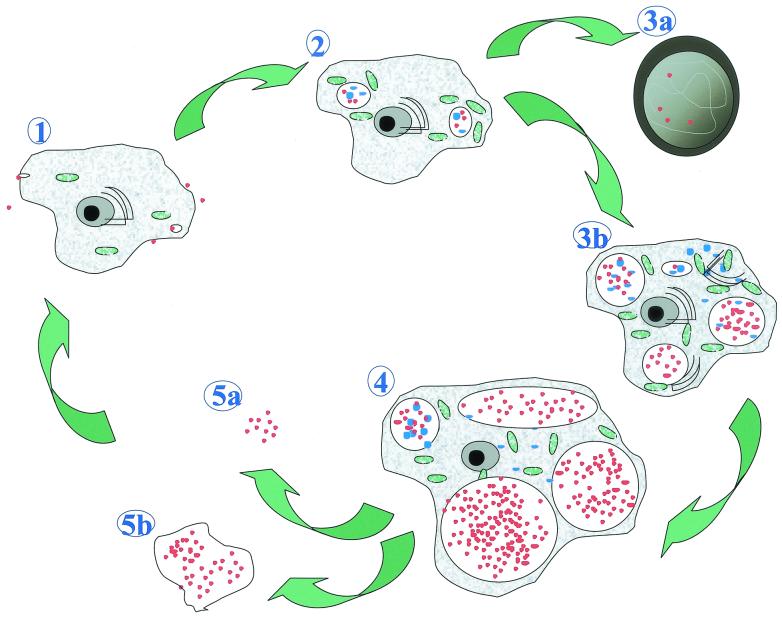FIG. 7.
Life cycle of P. acanthamoeba within A. polyphaga. (1) Entry of reticulate or crescent bodies (red dots) within the protozoa. (2) Differentiation in reticulate bodies (blue dots) and multiplication by binary fission within vacuoles. (3a) Encystment: trophozoites heavily infected by Parachlamydia lose their ability to encyst. (3b) Multiplication of the bacteria (many reticulate bodies, intravacuolar and intracytoplasmic), with increased vacuole and cytoplasm sizes. Dilatation of the endoplasmic reticulum (black semicircles) and metabolic activation (mitochondria, in green) are shown. (4) Amoeba with dilated vacuoles filled with elementary and crescent bodies. (5a) Free Parachlamydia bacteria. (5b) Expelled vesicles filled with Parachlamydia bacteria.

